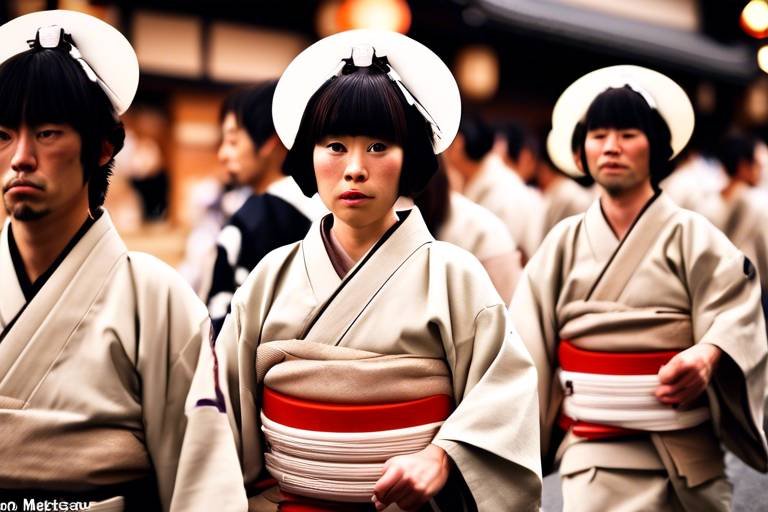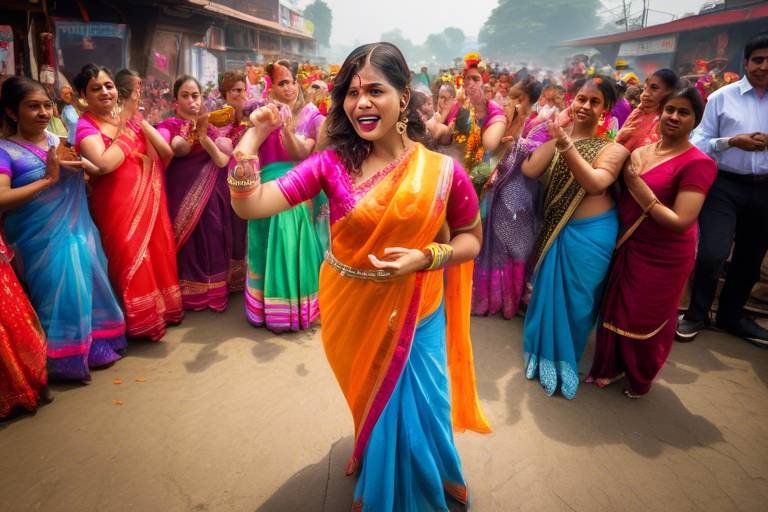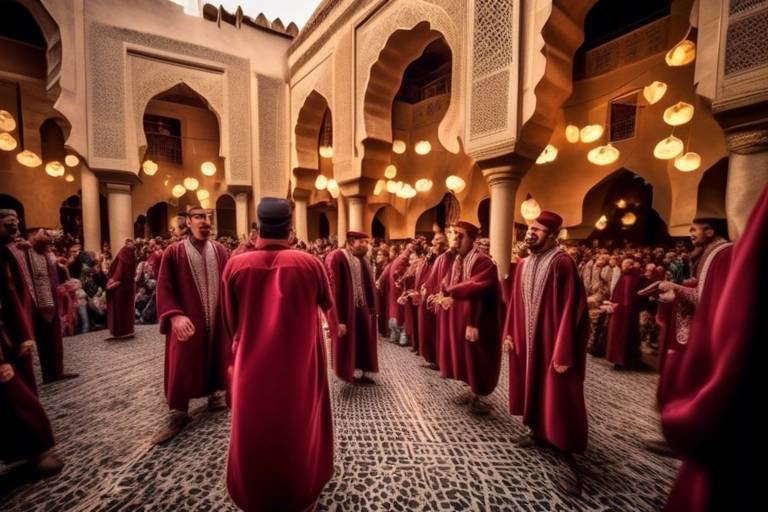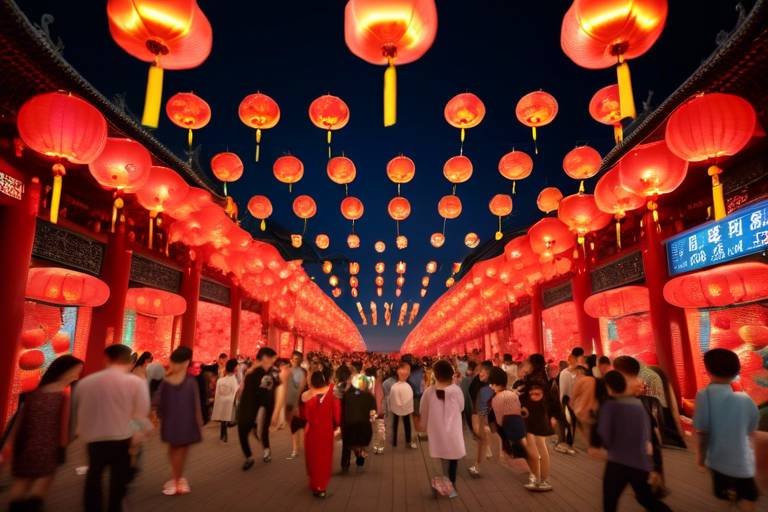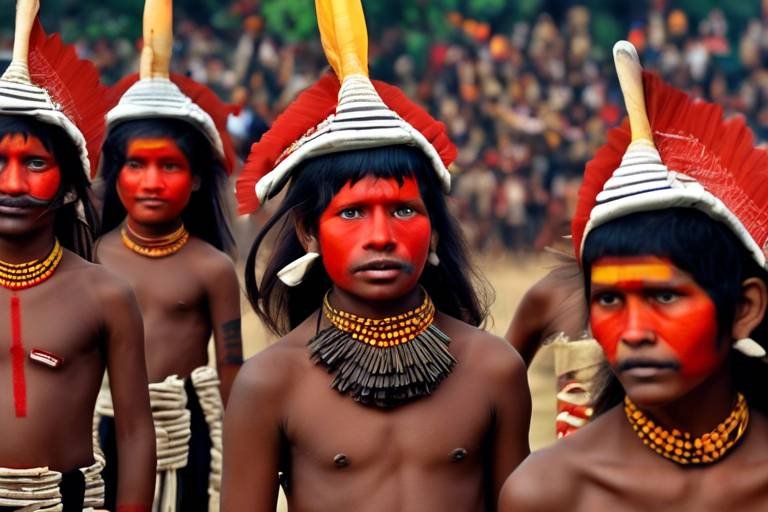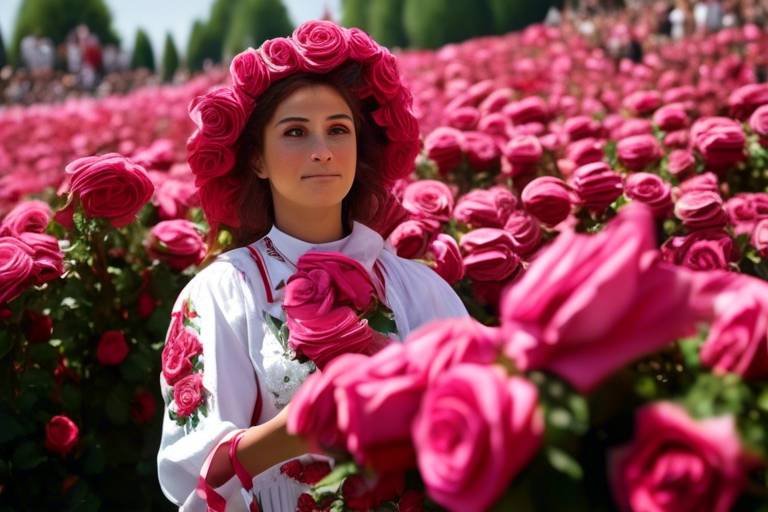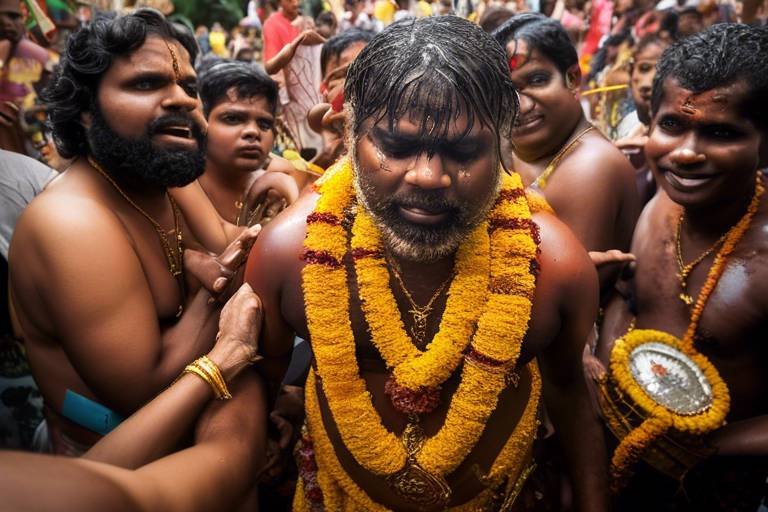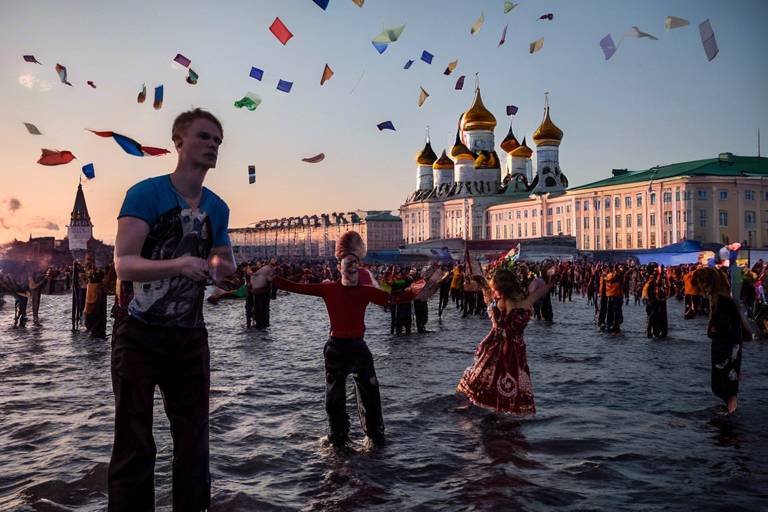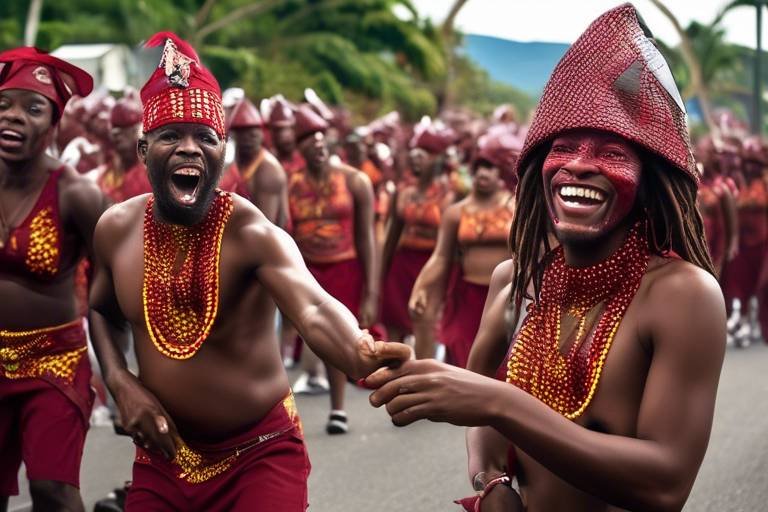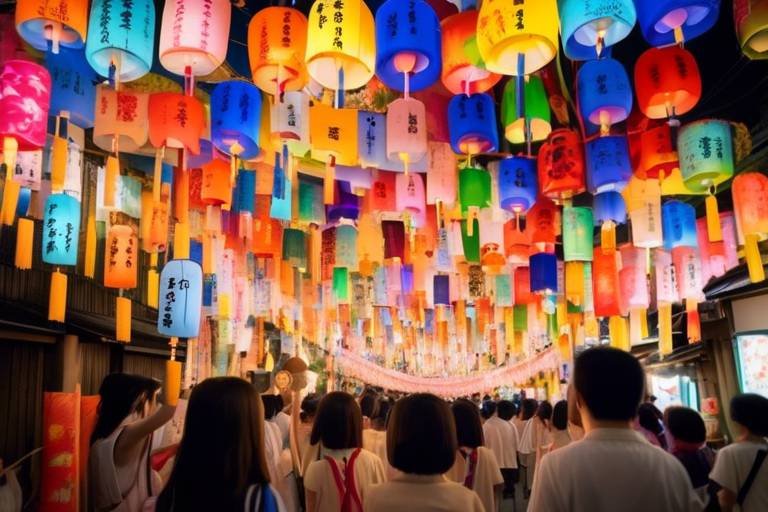The Gion Matsuri - Kyoto's Historic Festival Extravaganza
The Gion Matsuri is a spectacular celebration deeply rooted in Kyoto's history and culture, captivating locals and tourists alike with its vibrant displays and traditional performances. This historic festival extravaganza, held annually in Kyoto, is a testament to the city's rich heritage and enduring traditions.
Originating in the 9th century, the Gion Matsuri has evolved over the centuries to become one of Japan's most famous and oldest festivals. It serves as a symbol of Kyoto's cultural identity, reflecting the essence of the city's past while embracing the present with open arms.
The main events and attractions of the Gion Matsuri are a sight to behold, with the Yamaboko Junko parade leading the way in showcasing elaborate floats and colorful processions. The Mikoshi Procession, traditional music performances, tea ceremonies, and more add to the festival's allure, offering a diverse range of experiences for attendees.
Participants of the Gion Matsuri don intricate traditional costumes and attire, each piece meticulously crafted and laden with symbolic significance. These outfits not only pay homage to the festival's historical roots but also serve as a visual representation of Kyoto's cultural heritage and artistic finesse.
One cannot talk about the Gion Matsuri without mentioning the culinary delights that await visitors. From delectable street food stalls offering local delicacies to exclusive festival dishes available only during this time of the year, the festival is a feast for the senses.
Artisanal crafts and souvenirs play a significant role in the Gion Matsuri, with handcrafted goods and traditional textiles showcasing the talent and dedication of Kyoto's local artisans. These unique items serve as tangible reminders of the festival's artistic legacy.
Innovative elements and modern interpretations have breathed new life into the Gion Matsuri, ensuring its relevance in contemporary times. By blending traditional practices with fresh ideas, the festival continues to captivate audiences and evolve with the changing landscape.
Community participation lies at the heart of the Gion Matsuri, with local residents, businesses, and organizations joining forces to organize and support the festivities. This collective effort fosters a sense of unity and pride, strengthening the bond between the community and Kyoto's cultural heritage.
While the Gion Matsuri's traditions are cherished, ongoing preservation efforts are essential to safeguarding its legacy for future generations. By addressing challenges and adapting to modern demands, the festival looks towards the future with optimism, ready to embrace new possibilities while staying true to its roots.
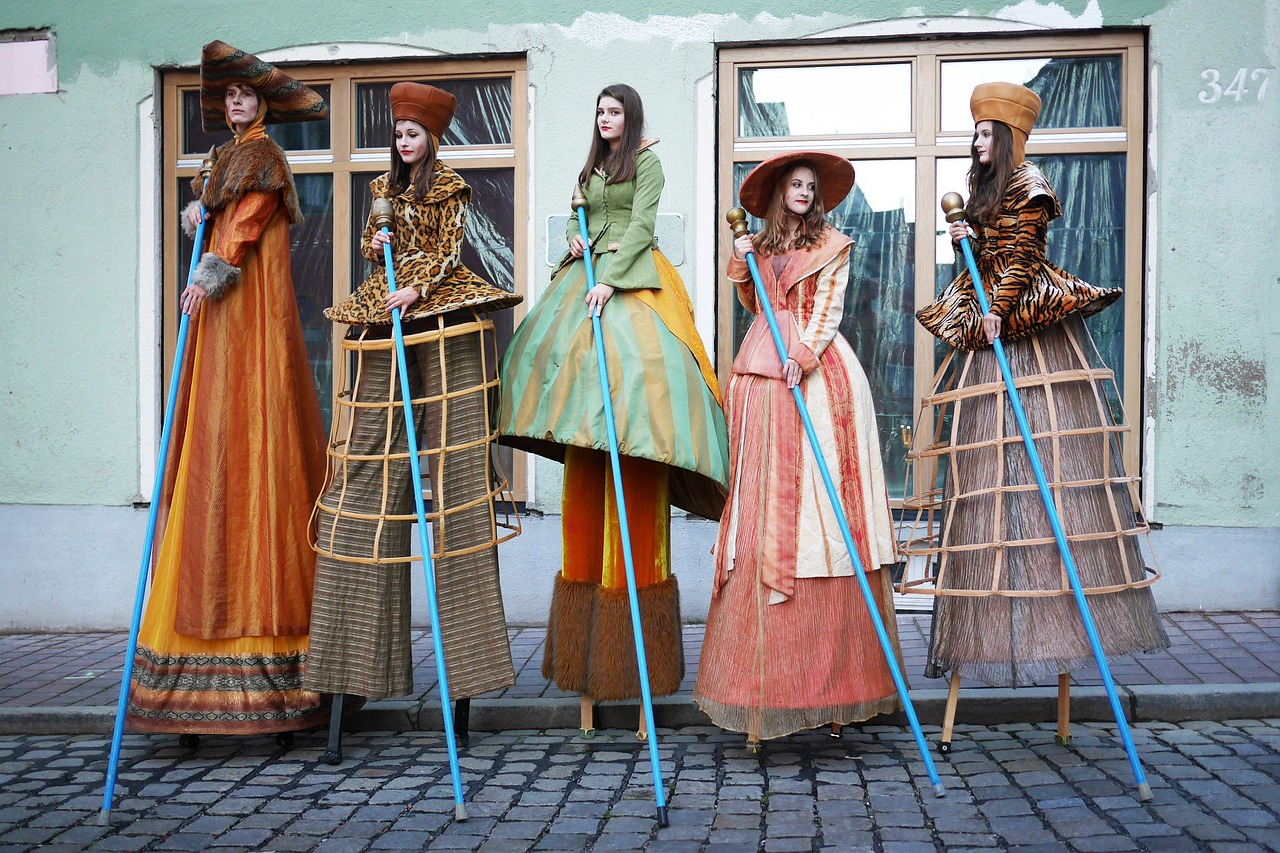
Origins and History
The Gion Matsuri, one of Japan's most iconic festivals, has a rich history that dates back to the 9th century. Originating as a purification ritual to appease the gods during the time of plague, the festival has evolved over the centuries into a vibrant celebration of Kyoto's cultural heritage and traditions. The Gion Matsuri stands as a symbol of resilience and continuity, showcasing the deep-rooted connection between the city's past and present.
Throughout its history, the Gion Matsuri has witnessed various transformations and adaptations, yet it has managed to retain its essence and significance. The festival's evolution mirrors the changes in Japanese society and reflects the enduring spirit of the people. Each year, as the festival unfolds, it weaves together a tapestry of stories, rituals, and performances that pay homage to Kyoto's illustrious past.
The Gion Matsuri is not merely a series of events but a living testament to the traditions and values that have shaped Kyoto over the centuries. From the majestic processions to the intricate rituals, every aspect of the festival is steeped in history and symbolism, offering a glimpse into a bygone era. As visitors immerse themselves in the festivities, they are transported back in time, experiencing the magic and allure of ancient Japan.
As the Gion Matsuri continues to captivate audiences from around the world, its legacy remains firmly rooted in the hearts of the people. The festival's history is a testament to the enduring power of culture and tradition, serving as a reminder of the importance of preserving our heritage for future generations. In a rapidly changing world, the Gion Matsuri stands as a beacon of continuity, offering a glimpse into the past while embracing the possibilities of the future.

Main Events and Attractions
The Gion Matsuri in Kyoto is renowned for its diverse range of events and attractions that captivate both locals and visitors alike. One of the main highlights of the festival is the Yamaboko Junko parade, where elaborately decorated floats are paraded through the streets of Kyoto, accompanied by traditional music and performances. Each float represents a different neighborhood in the city, showcasing unique designs and craftsmanship that date back centuries.
Another must-see event during the Gion Matsuri is the Mikoshi Procession, where portable shrines are carried by participants in a lively procession, symbolizing the spiritual essence of the festival. The rhythmic chanting and energetic atmosphere create a sense of unity and reverence among the participants and spectators.
For those interested in experiencing traditional Japanese culture, the Gion Matsuri offers tea ceremonies conducted in serene tea houses, providing a glimpse into the art of tea preparation and the significance of this ancient ritual in Japanese society. Visitors can savor the delicate flavors of matcha tea while surrounded by the tranquil ambiance of a traditional tea room.
Music enthusiasts will be delighted by the traditional music performances held throughout the festival, featuring mesmerizing melodies played on traditional instruments such as the shamisen and taiko drums. These performances showcase the rich musical heritage of Japan and add a dynamic element to the festival's cultural tapestry.
Moreover, the Gion Matsuri is a feast for the senses with its array of culinary delights, ranging from savory street food like yakitori skewers and takoyaki to sweet treats like taiyaki and kakigori. Festival-goers can sample a variety of local delicacies prepared fresh at food stalls lining the festival grounds, offering a taste of Kyoto's vibrant food culture.
As night falls, the festival transforms into a magical spectacle with illuminated displays and fireworks lighting up the sky, casting a colorful glow over the ancient streets of Kyoto. The combination of traditional festivities and modern entertainment creates a unique and unforgettable experience for all who attend the Gion Matsuri.
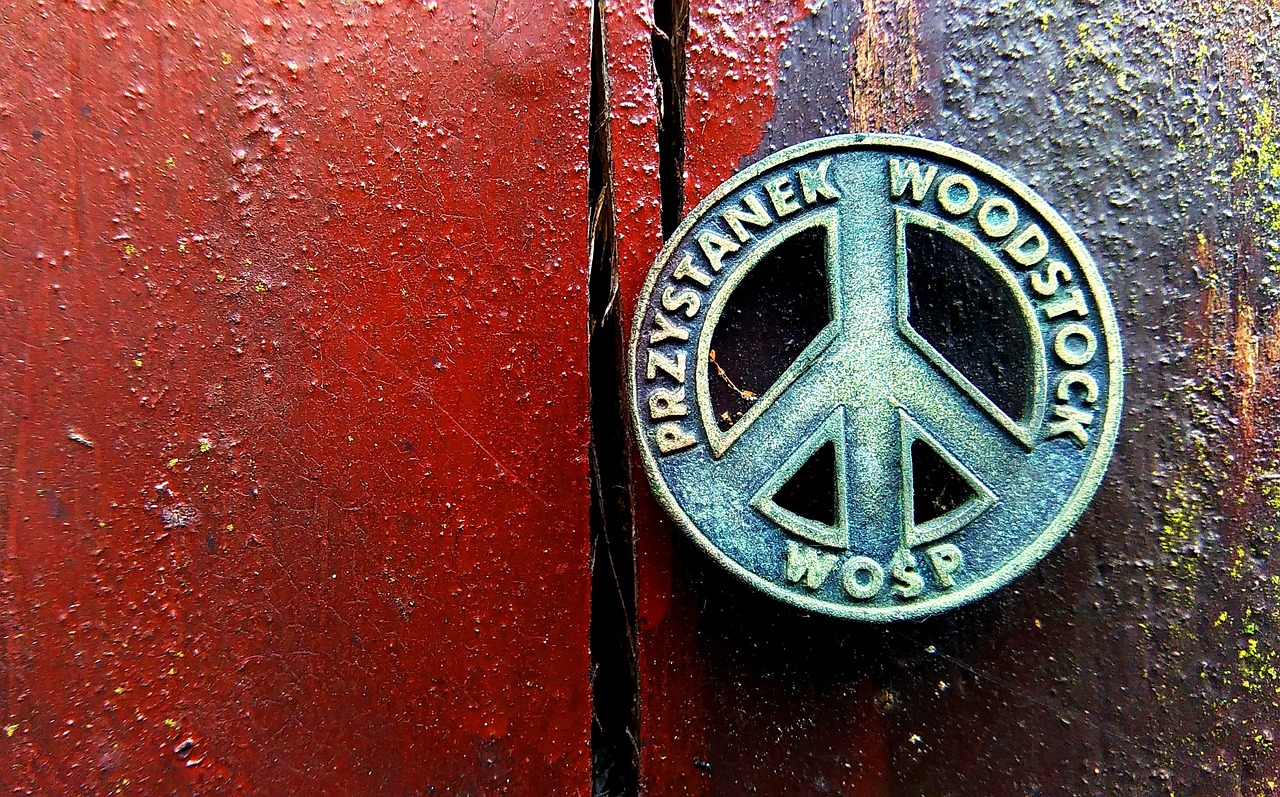
Traditional Costumes and Attire
Explore the rich history and cultural significance of the Gion Matsuri, one of Japan's most famous and oldest festivals held annually in Kyoto, featuring colorful processions, traditional performances, and vibrant celebrations.
When it comes to the Gion Matsuri, traditional costumes and attire play a crucial role in adding to the grandeur and authenticity of the festival. Participants don elaborate garments that have deep-rooted symbolic meanings, reflecting the festival's historical roots and cultural significance. These costumes are not merely clothing but pieces of art that showcase the intricate craftsmanship and attention to detail that define Kyoto's traditional attire.
One of the most iconic pieces of clothing worn during the Gion Matsuri is the Yukata, a casual summer kimono made of lightweight cotton fabric. The vibrant colors and intricate patterns of the Yukata symbolize the festive spirit of the occasion, with each design holding its own unique symbolism and significance. Participants often accessorize their Yukata with Obi belts and geta sandals, completing the traditional look with elegance and style.
For women, the Furisode kimono is a popular choice during the Gion Matsuri, characterized by its long sleeves that flow gracefully as they move. The elaborate embroidery and luxurious fabrics used in Furisode kimonos exemplify the beauty and sophistication of traditional Japanese attire, making a striking impression during the festival's events and processions.
Men participating in the Gion Matsuri often don Happi coats and Hakama pants, traditional garments that exude a sense of heritage and tradition. The bold colors and geometric patterns of Happi coats, paired with the wide-legged silhouette of Hakama pants, create a distinctive look that pays homage to Japan's cultural past while celebrating the festival's vibrant atmosphere.
Throughout the Gion Matsuri, the streets of Kyoto come alive with a kaleidoscope of colors and textures as participants don their traditional costumes and attire, transforming the city into a living canvas of cultural expression and artistic heritage.
Stay tuned for answers to common queries about the Gion Matsuri, its traditions, and how to make the most of this spectacular festival!

Culinary Delights
When it comes to the Gion Matsuri, the culinary delights offered during the festival are an essential part of the experience, tantalizing the taste buds of both locals and visitors alike. From the bustling streets lined with traditional street food stalls to the special festival dishes only available during this time of year, the Gion Matsuri offers a feast for all the senses.
One of the highlights of the culinary offerings at the Gion Matsuri is the array of traditional street food stalls that line the festival route. Here, you can find a variety of local delicacies such as takoyaki, yakitori, and yaki soba, all freshly prepared and bursting with flavor. These street food stalls not only provide a convenient and delicious way to refuel during the festivities but also give a glimpse into Kyoto's rich culinary heritage.
For those looking for a more immersive culinary experience, the Gion Matsuri also features special festival dishes that are exclusive to the event. These dishes often showcase seasonal ingredients and traditional cooking techniques, offering a unique taste of Kyoto's gastronomic traditions. Whether it's savory grilled skewers or sweet treats like wagashi, the festival's culinary offerings are sure to leave a lasting impression.
In addition to the savory and sweet delights, the Gion Matsuri also offers a variety of refreshing beverages to quench your thirst as you explore the festival grounds. From traditional green tea to refreshing yuzu lemonade, there's a drink to suit every palate and keep you cool as you take in the vibrant celebrations.
Overall, the culinary delights of the Gion Matsuri play a vital role in enhancing the overall festival experience, offering a taste of Kyoto's rich culinary heritage and providing a sensory journey that complements the traditional performances and vibrant atmosphere of the event.
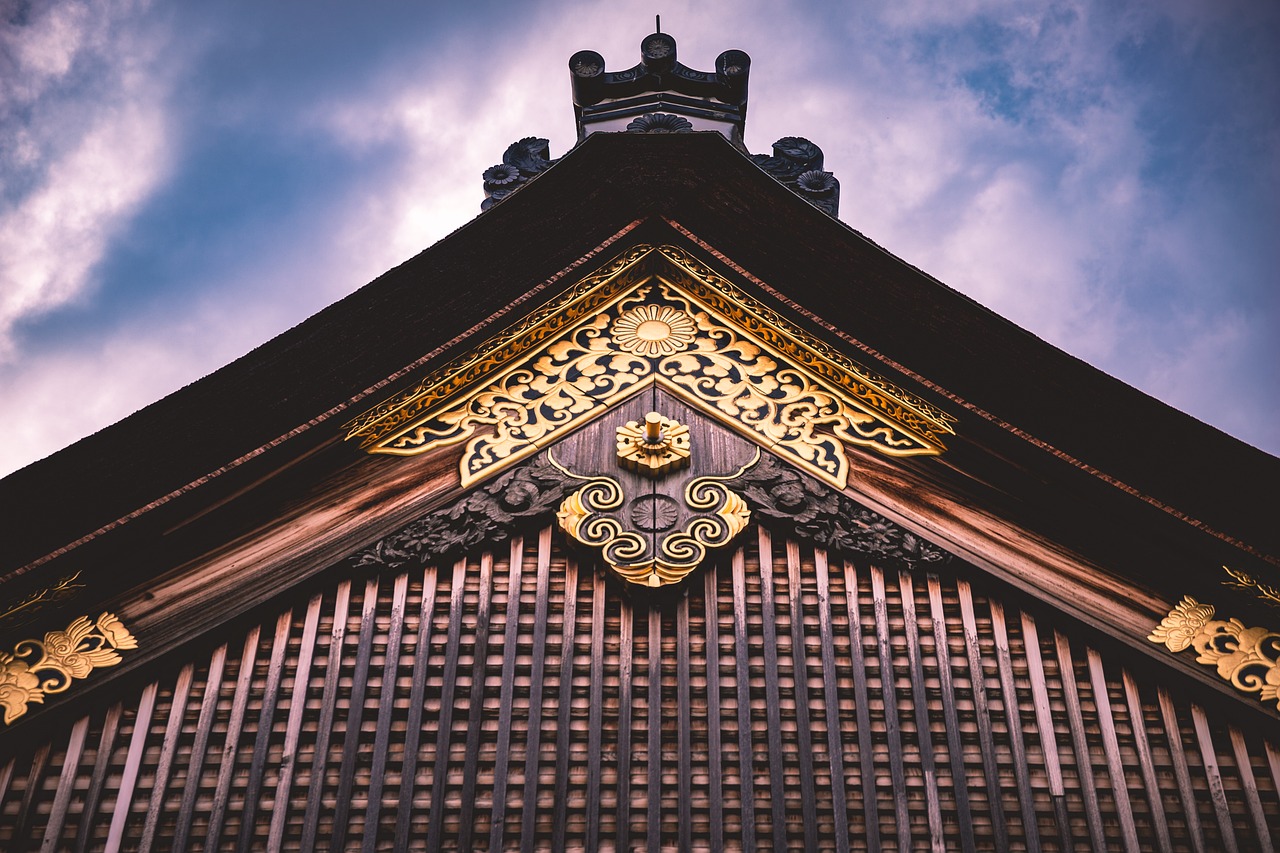
Artisanal Crafts and Souvenirs
When exploring the Gion Matsuri, one cannot overlook the exquisite artisanal crafts and unique souvenirs that encapsulate the essence of Kyoto's rich cultural heritage. From intricately handcrafted goods to traditional textiles, each item tells a story of the city's craftsmanship and artistry, making them cherished mementos for visitors and locals alike.
Artisans meticulously create a wide array of products that reflect Kyoto's traditional techniques and aesthetics. Delicate ceramics, elegant lacquerware, and intricate textiles adorned with intricate patterns and motifs are just a few examples of the craftsmanship on display during the festival. These artisanal crafts not only serve as souvenirs but also as tangible reminders of Kyoto's artistic legacy.
Visitors have the opportunity to witness artisans in action, showcasing their skills and dedication to preserving age-old traditions. Whether observing a master potter shaping clay or a kimono weaver meticulously crafting a garment, the process of creating these artisanal crafts is a mesmerizing experience that offers insight into Kyoto's cultural heritage.
Moreover, the variety of souvenirs available caters to diverse tastes and preferences, ensuring that there is something for everyone to take home as a keepsake of their Gion Matsuri experience. Hand-painted fans, intricately carved wooden items, and finely embroidered textiles are just a few examples of the treasures waiting to be discovered at the festival.
For those seeking truly unique and authentic souvenirs, visiting the artisanal craft stalls dotted throughout the festival grounds is a must. Here, visitors can interact with artisans, learn about the traditional techniques used in crafting each item, and even try their hand at creating their own piece of Kyoto's cultural legacy.

Modern Interpretations and Innovations
Modern Interpretations and Innovations of the Gion Matsuri festival showcase a harmonious blend of tradition and contemporary elements, ensuring its continued relevance and appeal to a diverse audience. The festival has evolved over time to incorporate modern interpretations while preserving its historical roots, creating a dynamic and engaging experience for both locals and visitors.
One of the key modern innovations of the Gion Matsuri is the integration of technology into the traditional festivities. From interactive digital displays to augmented reality experiences, technology has been seamlessly woven into the fabric of the festival, adding a new layer of excitement and engagement for attendees.
Furthermore, contemporary art installations and performances have become a prominent feature of the Gion Matsuri, infusing the event with a fresh and creative energy. Artists and designers collaborate to create immersive and visually stunning displays that pay homage to the festival's heritage while pushing boundaries and exploring new artistic frontiers.
In addition, the Gion Matsuri has embraced sustainable practices and eco-friendly initiatives in recent years, reflecting a growing global awareness of environmental issues. From reducing waste and promoting recycling to implementing green transportation options, the festival is committed to minimizing its ecological footprint and promoting a more sustainable future.
Moreover, the Gion Matsuri has embraced inclusivity and diversity, welcoming participants and spectators from all walks of life. Efforts to showcase a wide range of cultural expressions and traditions have made the festival a symbol of unity and acceptance, celebrating the richness of human diversity and fostering cross-cultural understanding.
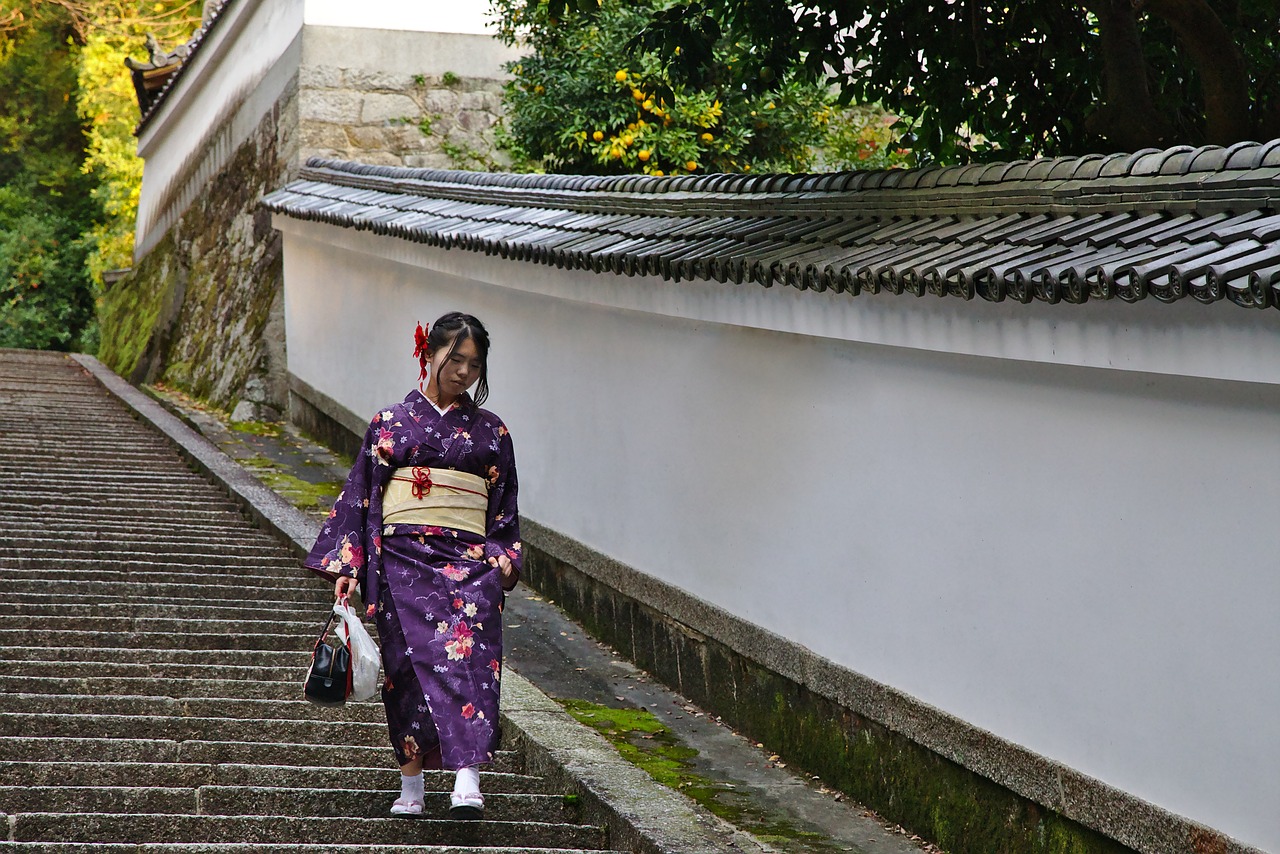
Community Participation and Involvement
Community participation and involvement play a vital role in the success and vibrancy of the Gion Matsuri festival in Kyoto. Local residents, businesses, and organizations come together each year to contribute their time, resources, and creativity to make the event a memorable experience for all attendees. The festival serves as a unifying force, bringing the community closer and instilling a sense of pride in Kyoto's rich cultural heritage.
From sponsoring traditional performances to organizing cultural exhibitions, the active involvement of the community ensures that the Gion Matsuri remains deeply rooted in local traditions while also embracing new ideas and innovations. Residents eagerly participate in various aspects of the festival, from assisting in the setup of decorations to volunteering during the parades, showcasing their dedication to preserving and celebrating Kyoto's unique cultural identity.
Local businesses also play a significant role in the Gion Matsuri, with many establishments offering special promotions, hosting events, and creating limited-edition products to commemorate the festival. The collaborative efforts of businesses and community members contribute to the festival's economic impact, attracting tourists and fostering a sense of camaraderie among locals.
Moreover, community organizations actively engage in supporting the Gion Matsuri through fundraising initiatives, cultural workshops, and educational programs aimed at promoting awareness and appreciation of the festival's historical significance. These grassroots efforts not only ensure the festival's continued success but also encourage intergenerational participation, passing down traditions from one generation to the next.
Overall, the Gion Matsuri stands as a testament to the power of community spirit and collaboration in preserving cultural heritage and fostering a sense of belonging among residents of Kyoto. Through active participation and involvement, the festival continues to thrive and evolve, reflecting the enduring bond between the people of Kyoto and their cherished traditions.
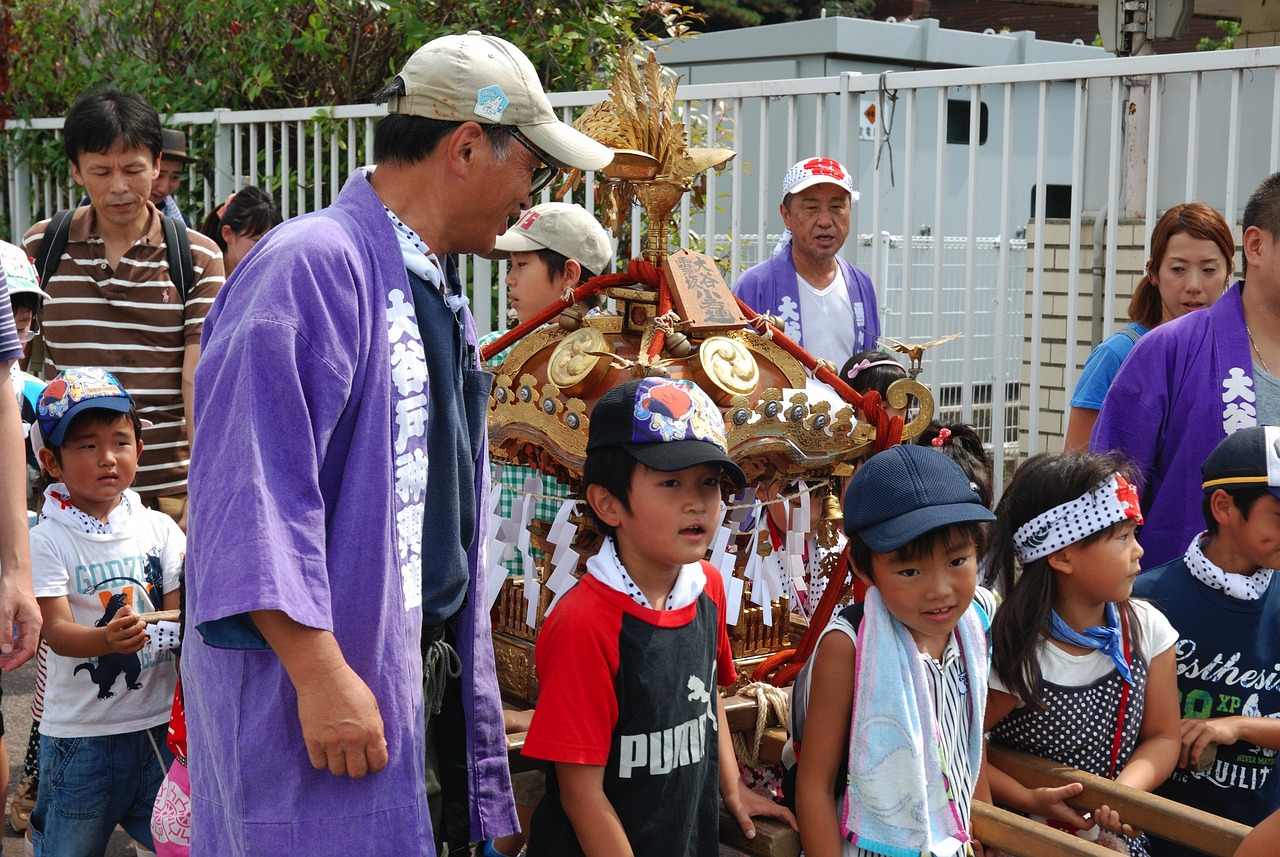
Preservation Efforts and Future Outlook
Preserving the rich traditions and cultural heritage of the Gion Matsuri is a paramount effort undertaken by various organizations and individuals in Kyoto. Through meticulous documentation, restoration projects, and educational programs, the festival's historical significance is safeguarded for future generations to cherish and experience. The meticulous care taken in preserving the authenticity of the Gion Matsuri ensures that each year's celebration remains a true reflection of Kyoto's vibrant past and enduring traditions.
Looking ahead, the future outlook of the Gion Matsuri is a blend of honoring tradition while embracing innovation. As the festival continues to evolve, organizers are exploring ways to incorporate modern elements without compromising the essence of this centuries-old event. By engaging with younger generations and adapting to changing societal norms, the Gion Matsuri aims to stay relevant and captivating for years to come, ensuring its continued place as a cultural cornerstone of Kyoto.
Frequently Asked Questions
- What is the significance of the Gion Matsuri festival?
The Gion Matsuri festival holds great cultural and historical significance as one of Japan's oldest and most famous festivals. It celebrates Kyoto's rich heritage and traditions through colorful processions, traditional performances, and vibrant celebrations.
- What are the main events and attractions at the Gion Matsuri?
The Gion Matsuri features a variety of main events and attractions, including the Yamaboko Junko parade, the Mikoshi Procession, tea ceremonies, traditional music performances, and more, all showcasing the essence of Kyoto's cultural traditions.
- What can visitors expect in terms of traditional costumes and attire at the Gion Matsuri?
Visitors can expect to see participants adorned in elaborate traditional costumes and attire during the festival, each piece carrying symbolic meanings and reflecting the historical roots and cultural significance of the Gion Matsuri.
- What culinary delights are available at the Gion Matsuri?
During the Gion Matsuri, visitors can indulge in a wide array of culinary delights, from traditional street food stalls offering local delicacies to special festival dishes that are unique to this time of the year, providing a taste of Kyoto's gastronomic culture.
- How has the Gion Matsuri adapted to modern times?
The Gion Matsuri has embraced modern interpretations and innovations, blending traditional practices with contemporary elements to appeal to a wider audience and ensure its continued relevance, showcasing a harmonious blend of old and new.

